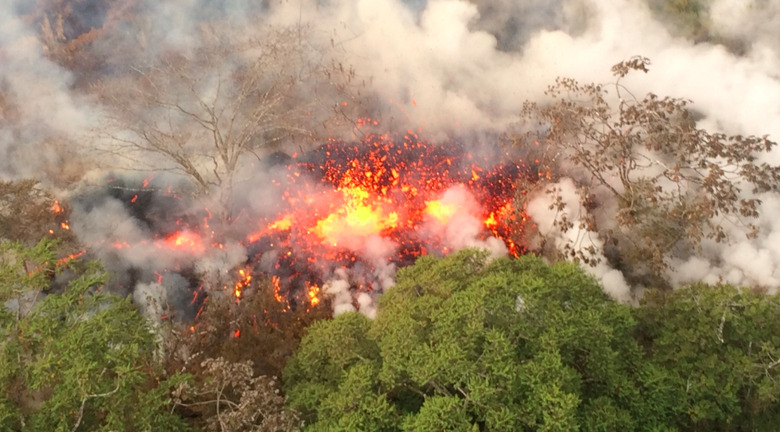Hawaii Volcano Eruption Creates Monstrous 30,000ft Kilauea Ash Plume
The Hawaiian Volcano Observatory reports that the Kilauea volcano's summit ejected smoke and volcanic ash into the air this morning, causing a plume that will blanket the surrounding region. The US Geological Survey joined the report, revealing that the cloud produced by the volcanic eruption reached up to 30,000ft, nearly the same cruising altitude for an airplane.
According to the USGS's most recent update on the Kilauea Volcano's activity, the agency reports that an explosion from the Overlook vent in the Halemaumau crater took place at 4:14AM local time this morning. The resulting volcanic cloud has since drifted northeast, carrying volcanic ash and related health hazards.
The USGS issued a warning this morning, saying: "At any time, activity may again become more explosive, increasing in intensity of ash production and producing ballistic projectiles near the vent." The agency has shared several images of the explosion on its website here.

The USGS has been working with NOAA's National Weather Service to monitor the volcanic activity and keep the public up to date on potential hazards. Volcanic ash presents a major hazard for both people and aircraft, the latter of which could suffer sandblasted windscreens, clogged pitot tubes, and even engine failure when navigating through the ash clouds.
Breathing in any ash can be problematic for one's health, but volcanic ash differs from the ash you're exposed to during, for example, a bonfire. Unlike the ash caused by burning leaves, wood, and paper, volcanic ash is composed of tiny fragments of rocks, mineral, and glass, the USGS explains. This type of ash results from volcanic eruptions and can be carried thousands of kilometers by the wind.

In addition to the health hazards presented by the ash plume, conditions may also make it difficult for nearby individuals to drive. The USGS is warning anyone experiencing visibility issues to pull over and wait for conditions to clear. Toxic gas produced by fissures have also resulted in a RED alert for air quality conditions in nearby regions. Residents are warned that severe conditions could cause breathing troubles.

